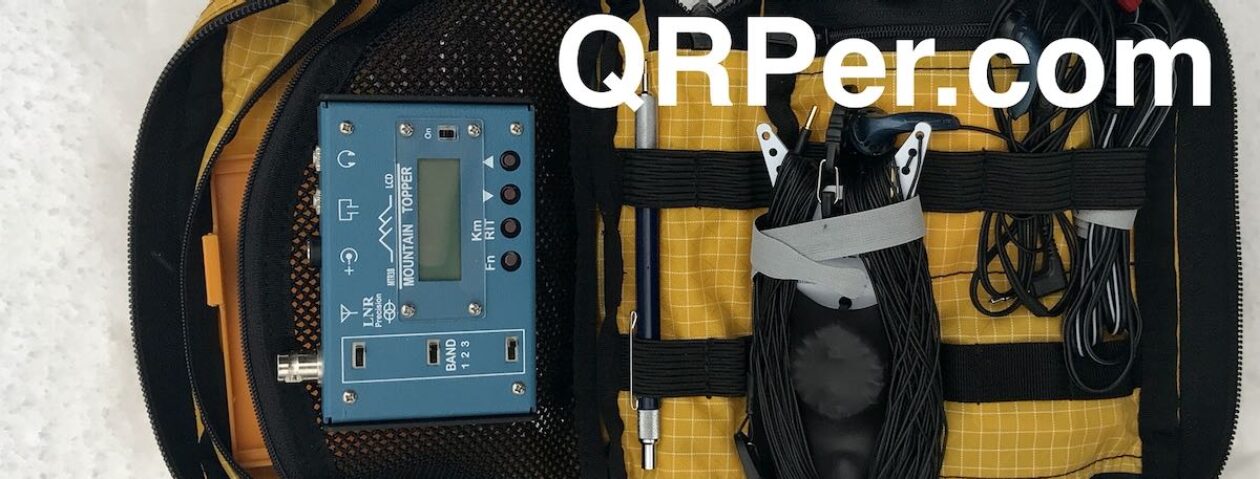Many thanks to Scott (VA3EKR) who shares the following guest post which was originally posted on his blog:
July 17—18, 2025. Lake Erie POTA Mini-vacation
by Scott (VA3EKR)
The Plan
I had the Monday and Tuesday off from work, as an extended July 4th. Unfortunately both my daughter and wife had to work, and we also have some animals that are in need of constant medical attention, so this was going to have to be a solo trip.
I have long been fascinated by the coastline near Long Point, but until this point I had only seen it in pictures and maps. I wanted to camp overnight, and do two activations from Long point, and book-end it with a POTA activation both before and after.
I booked at the last moment, and so there was only one site available, despite being on a Monday. I looked at a few online pictures of the site, and noticed it had trees, so I was hopeful. It was also near the beach. Site 335.
I left around 9:30 in the morning, and I was planning for about a 2 hour drive. The plan was to activate Turkey Point Provincial Park (CA-0417) at around 11:00, then have a nice lunch at 13:00, and drive to Long Point (CA-0279) for the 14:00 arrival-time check-in.
Turkey Point Provincial Park (CA-0417)
Arriving at Turkey Point, the staff were very helpful and, because I had a reservation for another provincial park later that afternoon, they did not charge me an admission fee. I drove to a picnic table that was right next to some trees, and had an easy setup.
I used a Packtenna Random Wire that has a 9:1 transformer neatly packaged onto the winder.
The bands were moderately active, and it did not take me long to activate on 20m CW with the KX2. 17 QSOs in about an hour. I brought a 30AH battery to allow me to operate for a long time, however in retrospect, I believe that the internal charger for the KX2 never engaged. I had a full charge on the KX2 beforehand, so I suspect that all three activations were done on its internal battery! I ended it on a fitting note with a park-to-park with Jim in Nebraska (WBØRLJ).
| Date | Time | Call | State | Band | Mode | Park |
|---|---|---|---|---|---|---|
| 2025/07/07 | 15:52 | KO4USA | GA | 20m | CW | |
| 2025/07/07 | 15:53 | K2UPD | NY | 20m | CW | |
| 2025/07/07 | 15:54 | NAØF | MN | 20m | CW | |
| 2025/07/07 | 15:55 | KA5TXN | TX | 20m | CW | |
| 2025/07/07 | 15:57 | W3YJ | PA | 20m | CW | |
| 2025/07/07 | 15:59 | AA5XA | AR | 20m | CW | |
| 2025/07/07 | 16:00 | KO4ALY | AL | 20m | CW | |
| 2025/07/07 | 16:03 | W5KEB | AR | 20m | CW | |
| 2025/07/07 | 16:05 | KB3A | AL | 20m | CW | |
| 2025/07/07 | 16:06 | KM4QNA | AL | 20m | CW | |
| 2025/07/07 | 16:14 | KG4NXT | VA | 20m | CW | |
| 2025/07/07 | 16:21 | KAØLDG | ND | 20m | CW | |
| 2025/07/07 | 16:33 | KE2BKW | PA | 40m | CW | US-8734 |
| 2025/07/07 | 16:39 | W9MET | FL | 20m | CW | US-3605 |
| 2025/07/07 | 16:42 | AB9CA | IL | 20m | CW | US-4104 |
| 2025/07/07 | 16:50 | K1ATL | NH | 20m | CW | |
| 2025/07/07 | 17:02 | WBØRLJ | NE | 20m | CW | US-4010 |
Following the activation I went to the Tipsy Pirate that had a nice outside deck overlooking the water.
I had a nice vegi-burrito and fries and an afternoon cocktail.
Long Point Provincial Park (CA-0279)
I arrived at Long Point and found the site. It was even nicer than I had hoped! It was perfect for POTA, it was fairly quiet, and close to the lake.
My plan was to activate in the early afternoon while the UV was at its worse, under the shade of the campsite trees, and then check out the lake, and have some supper.
Continue reading Scott’s Lake Erie POTA Mini-Vacation


































































































